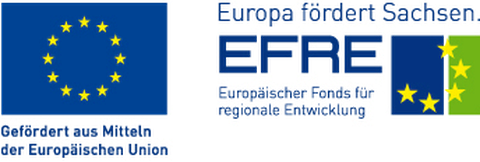Cool Energy Car Communication - Phase I and II
CECC - Cool Energy Car Communication
ProjeCt DESCRIPTION
The procedures of acceleration and braking as well as waiting at traffic lights contribute to a large extend to the fuel consumption of motor vehicles in urban areas. To reduce this influence, some car manufactureres have already offered start-stop automatic modes for standby or intelligent motor controllers for hybrid vehicles. To archieve a further reduction of fuel consumption, approaches are shown as follws:
- optimization of the approximation process of the traffic light sytem for reducing the braking and acceleration operations
- avoidance of stopping at traffic lights
- adjustment of engine management when approaching a traffic light controlled intersection
The prerequisites for the realization of these approaches are the knowledge of the green and red phases of the traffic light system, the exact position of the vehicle, the display of the driving instructions as well as the automatic of the engine management. The creation of these conditions is the goal of the project CECC and it should be achieved in the form of an energy efficient traffic light assistance system. Additionally, energy savings shall be enhanced through control of other electric loads inside the vehicle while maintaining the regular functionality.
To achieve an optimal energy efficiency of the traffic light assistance system, following steps shall be implemented:
- adjusted operating strategies with activation and deactivation as well as the use of power-saving and sleeping status of the controller and modules
- optimized antenna configurations to minimize the transmission power
- simulation of the environment to determine the optimal antenna locations
Takes of ITVS
- RF planning and simulation
- investigation of different communication technologies, particularly IEEE 802.15.4
- evaluation of the power consumption of the communication and tracking devices
- localization through wireless sensor networks
- local car2X communications
Leading-edge cluster Cool Silicon
The project CECC is part of the leading-edge cluster COOL SILICON and it is funded by the European Funding for Regional Development (EFRE) and the Free State of Saxony.
Funding: The project CECC is part of the leading-edge cluster COOL SILICON and it is funded by the European Funding for Regional Development (EFRE) and the Free State of Saxony.
- Spitzencluster Cool Silicon (Website )
- European Funding for Regional Development
Promoter:
- SAB Sächische Aufbaubank
( Website )
Project partner (CECC I):
- Technische Universität Dresden, Fakultät Verkehrswissenschaften "Friedrich-List", Institut für Automobiltechnik Dresden, Professur für Fahrzeugmechatronik Website
- Hochschule für Technik und Wirtschaft Dresden (HTW Dresden), Fakultät Maschinenwesen, Institut Fahrzeugtechnik, Lehrgebiet Kraftfahrzeug-Mechatronik Website
- Dresden Elektronik Ingenieurtechnik GmbH Website
- TraceTronic GmbH Website
- DMOS GmbH Website
Project partner (CECC II):
- Technische Universität Dresden, Fakultät Verkehrswissenschaften "Friedrich-List", Institut für Automobiltechnik Dresden, Professur für Fahrzeugmechatronik (Website), Lehrstuhl Telekommunikation (Website)
- Hochschule für Technik und Wirtschaft Dresden (HTW Dresden), Fakultät Maschinenwesen, Institut Fahrzeugtechnik, Lehrgebiet Kraftfahrzeug-Mechatronik Website
- Dresden Elektronik Ingenieurtechnik GmbH Website
- TraceTronic GmbH Website
- DMOS GmbH Website
- nubix Software-Design GmbH Website
Responsible:
Project duration CECC Phase I: 10-01-2010 bis 03-31-2013 Project duration CECC Phase II: 07-01-2012 bis 10-31-2014
- Leading-edge cluster Cool Silicon ( Cool Silicon )
- European Funding for Regional Development



